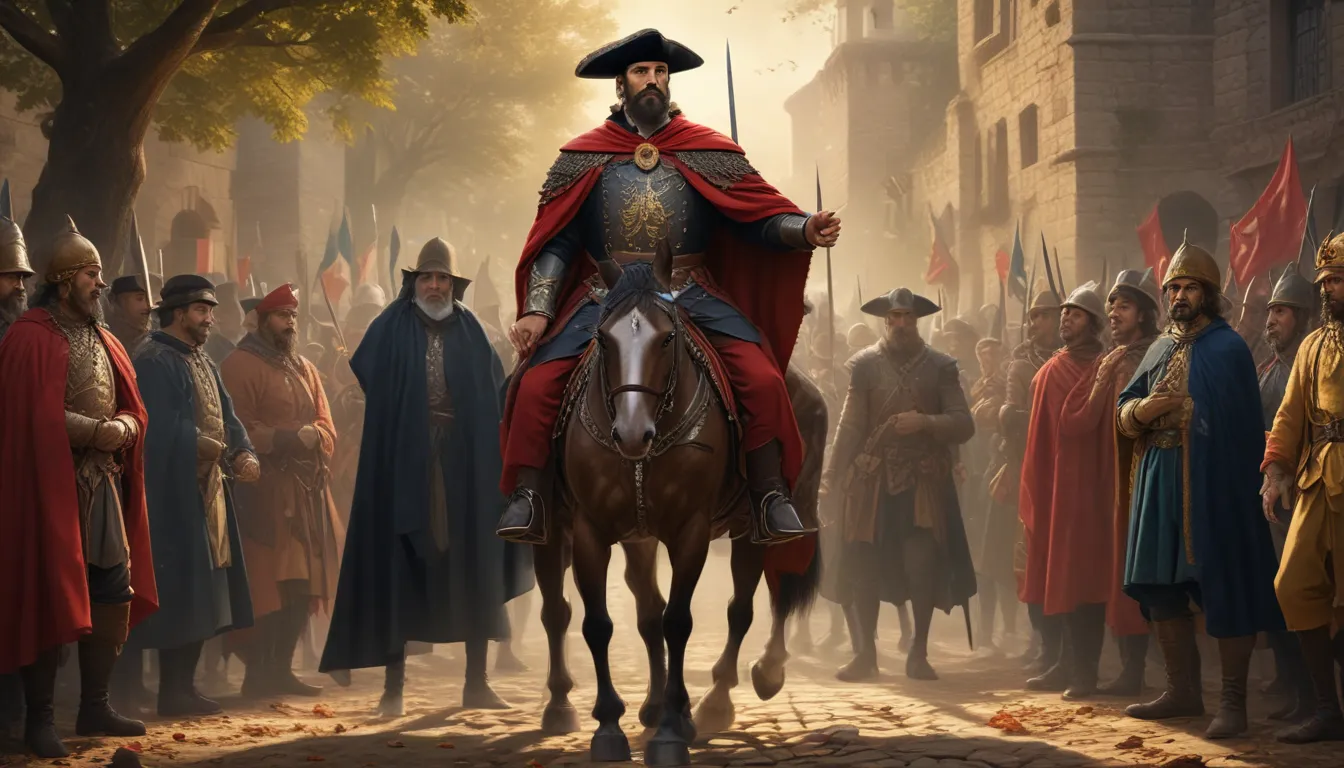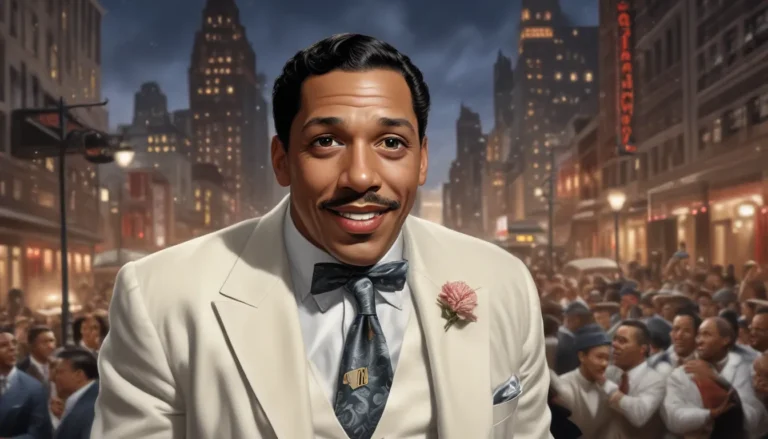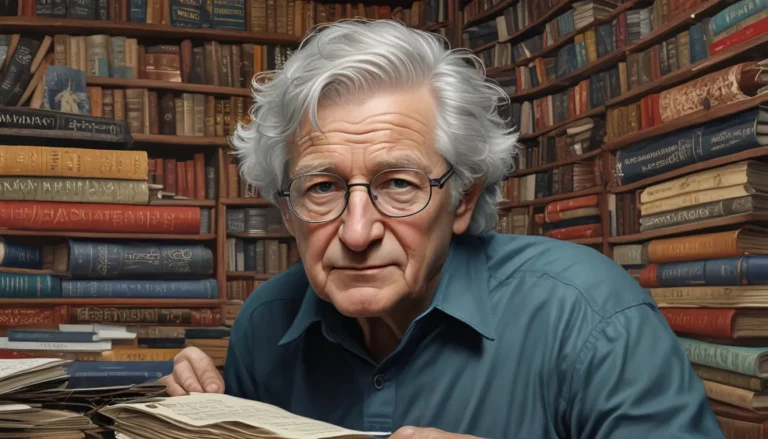The images in our articles may not match the content exactly. They are used to grab your attention, not to show the exact details in the text. The images complement the text but do not replace it.
Are you fascinated by the tales of conquest, adventure, and controversy that shape the narrative of history? Join us as we embark on a journey through the life of Francisco Pizarro, a Spanish conquistador whose exploits forever altered the landscape of South America. From humble beginnings to dramatic conquests, Pizarro’s story is a captivating tale of bravery, betrayal, and the relentless pursuit of discovery. Let’s dive into some of the most intriguing facts about this enigmatic figure and unravel the legacy he left behind.
Unveiling the Man Behind the Armor: Francisco Pizarro
Francisco Pizarro, born in Trujillo, Spain around 1474, was a Spanish conquistador renowned for his expeditions that led to the conquest of Peru and the foundation of Lima, the capital of Peru. His encounters with the Inca Empire reshaped the course of South American history, leaving behind a legacy of both admiration and controversy. Despite his illiteracy, Pizarro’s strategic military acumen and leadership prowess were instrumental in his successes, cementing his status as a pivotal figure in the age of exploration.
Exploring the Origins and Early Life of Francisco Pizarro
-
Humble Beginnings: Pizarro was born to Gonzalo Pizarro Rodríguez de Aguilar, a colonel of infantry, and Francisca González, a woman of modest means, in Trujillo, Spain. His upbringing was marked by humble origins, setting the stage for his future endeavors.
-
Early Adventures: Before embarking on his renowned conquests, Pizarro undertook several expeditions in the Americas, venturing into regions such as Panama and Nicaragua. These early voyages laid the foundation for his later forays into the heart of the Inca Empire.
The Conquest that Shaped a Continent: Francisco Pizarro and the Inca Empire
-
The Capture of Atahualpa: In 1532, Pizarro led a small force of approximately 180 men into the Inca Empire, where they captured the Incan Emperor Atahualpa during the Battle of Cajamarca. This pivotal event played a decisive role in the downfall of the Inca Empire and marked a turning point in South American history.
-
Founding of Lima: In 1535, Pizarro established the city of Lima, originally named “Ciudad de los Reyes” or the City of Kings. This city would later evolve into the capital of Peru, serving as a significant center of Spanish colonial power in South America.
The Fall of a Conqueror: Francisco Pizarro’s Reign and End
-
Ruthless Rule: Pizarro’s governance in Peru was characterized by his authoritarian tactics and the suppression of Incan revolts, fostering widespread resentment among the local populace and even stirring dissent among his compatriots.
-
Assassination and Legacy: In 1541, Pizarro met a violent end when a group of Spanish rivals led by Diego de Almagro II assassinated him in his palace in Lima. Despite his demise, Pizarro’s actions had already left an indelible mark on the history of South America, sparking ongoing debates about colonization and cultural exchange.
Legacy and Controversy: Unraveling the Impact of Francisco Pizarro
-
Historical Significance: Pizarro’s conquests heralded the spread of Spanish culture and language in South America, shaping the geopolitical landscape of the continent. However, his actions also precipitated the decline of the Inca Empire and the suffering of indigenous populations, underscoring the complex nature of historical figures like Pizarro.
-
Living Legacy: The city of Lima stands as a tangible reminder of Pizarro’s influence, embodying the legacy of the Spanish colonial era in South America. Visitors can explore sites like the Cathedral of Lima, where Pizarro’s remains are interred, reflecting on the history of conquest and colonization.
The Enduring Fascination with Francisco Pizarro
Francisco Pizarro’s tale encapsulates a saga of ambition, conquest, and consequence that reverberates through the annals of history. His expeditions reshaped the fabric of South America, leaving a legacy that continues to ignite debate and intrigue. As we delve into his life and deeds, we glean invaluable insights into the human experience, grappling with the ramifications of exploration and conquest. Pizarro’s story is a testament to the enduring impact of historical figures and the enduring relevance of their actions in shaping our world.
Delving Deeper: Exploring Francisco Pizarro’s Life and Legacy
For those eager to delve deeper into the enigma of Francisco Pizarro, a multitude of resources await. From books and documentaries to online repositories, a wealth of information is at your fingertips to uncover the intricacies of Pizarro’s conquests and their impact. Libraries and museums dedicated to Spanish colonial history offer immersive experiences to immerse oneself in the rich tapestry of Pizarro’s era, shedding light on a pivotal chapter in the annals of exploration.
As we navigate the labyrinth of history, Francisco Pizarro emerges as a figure of profound complexity, embodying the dualities of conquest and consequence that shape our understanding of the past. His story invites us to ponder the ethical quandaries of exploration and the enduring legacies of those who dared to chart uncharted territories. Join us in unraveling the enigmatic legacy of Francisco Pizarro, a man whose footsteps echo through the corridors of time, prompting reflection on the nature of discovery and the impact of our actions on the world.






